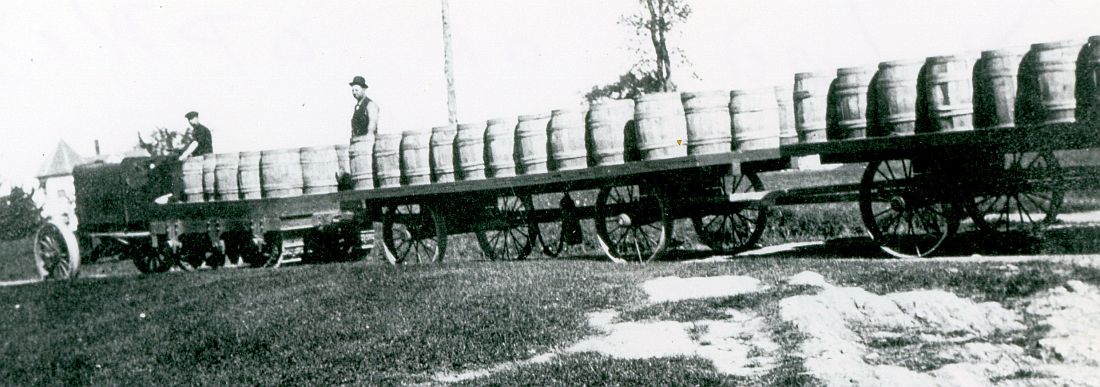
Shipping Apples
During the late 1800s and early 1900s, Maine apples were one of the top exported crops. In particular, the apples from Belgrade, Maine were considered highly desirable, especially in the United Kingdom. Apples were shipped by railroad or transported to Gardiner and loaded on ships.
As a farming community, Belgrade had several fine orchards. The best known was that of Joseph Taylor. In 1857, Taylor erected a two-story stone house on the west side of the road at the foot of Belgrade hill (presently the Oakland Rd). He dedicated himself to the cultivation of an exceptional orchard. Eventually he advertised himself as “Joseph Taylor, North Belgrade, Maine, Grower of Choice Apples and Pears”. By 1880, his orchard of six acres boasted 500 to 600 trees and grossed up to 500 bushels. His leading varieties were Baldwins, Northern Spry, Rhode Island Greening, Spitzenberg, King of Tompkins, Hubbardston, Nonesuch, and Yellow Bellflower. Following her father’s death in 1882, Joseph’s youngest daughter, Louise L. Taylor continued to successfully manage the orchard. Subsequent owner, Oral Page also continued to harvest apples.
Apples for export were packed in barrels and boxes. Originally, Maine barrel makers used whatever they had on hand to make an apple barrel. The barrel could be made any size and out of any material and hooped with ash, elm, gray birch or even hay wire. Flour barrels were often reused until a shortage of flour barrels occurred when flour packaging changed to sacks.

Eventually in 1916, the Maine legislature adopted regulation of apple barrels and boxes. Each barrel and box had to conform to the specific sizes and be marked on the side of the barrel, about half way between the top and bottom in plain good-sized letters, “STANDARD BARREL” or “STANDARD BOX”. Local barrel maker William Withers was certainly aware of the new regulations when he placed this ad in the Kennebec Journal.
The apple industry of Maine declined in the early 20th century after the United Kingdom began producing its own food sources following World War I and devasting winter freezes of the early 1930s wiped out more than half of Maine’s apple trees.
What to know more?
The Belgrade Historical Society will be hosting apple historian, John Bunker on Wednesday, July 30, at 6:00 p.m. at the Belgrade Old Town Meeting House.

Dianne Dowd is vice president of the Belgrade Historical Society.
Download Full Newspaper: High Res | Low Res (Details…)
<— Previous Article • Summaries • Next Article —>
©2025 by Summertime in the Belgrades. All rights reserved.